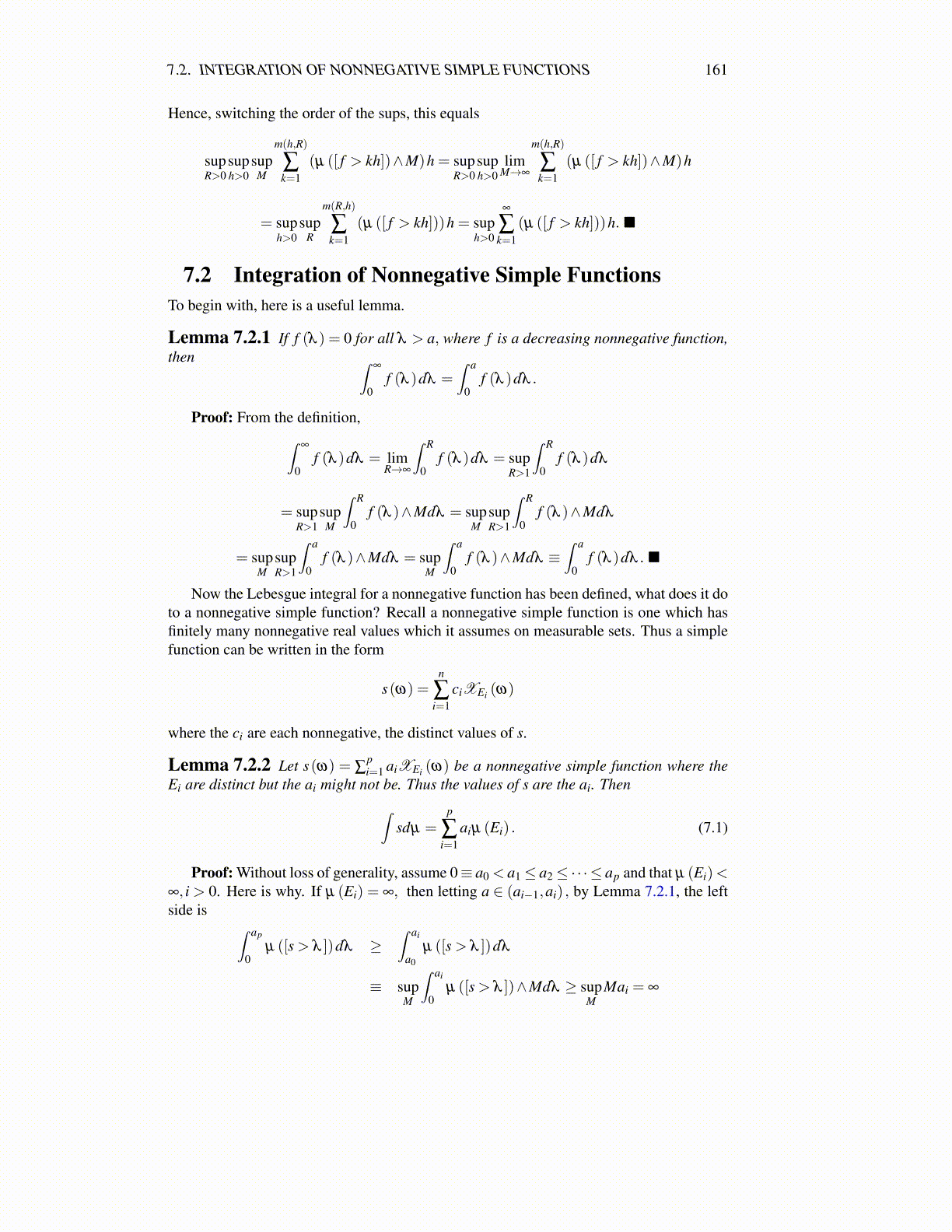
7.2. INTEGRATION OF NONNEGATIVE SIMPLE FUNCTIONS 161
Hence, switching the order of the sups, this equals
supR>0
suph>0
supM
m(h,R)
∑k=1
(µ ([ f > kh])∧M)h = supR>0
suph>0
limM→∞
m(h,R)
∑k=1
(µ ([ f > kh])∧M)h
= suph>0
supR
m(R,h)
∑k=1
(µ ([ f > kh]))h = suph>0
∞
∑k=1
(µ ([ f > kh]))h. ■
7.2 Integration of Nonnegative Simple FunctionsTo begin with, here is a useful lemma.
Lemma 7.2.1 If f (λ ) = 0 for all λ > a, where f is a decreasing nonnegative function,then ∫
∞
0f (λ )dλ =
∫ a
0f (λ )dλ .
Proof: From the definition,∫∞
0f (λ )dλ = lim
R→∞
∫ R
0f (λ )dλ = sup
R>1
∫ R
0f (λ )dλ
= supR>1
supM
∫ R
0f (λ )∧Mdλ = sup
MsupR>1
∫ R
0f (λ )∧Mdλ
= supM
supR>1
∫ a
0f (λ )∧Mdλ = sup
M
∫ a
0f (λ )∧Mdλ ≡
∫ a
0f (λ )dλ . ■
Now the Lebesgue integral for a nonnegative function has been defined, what does it doto a nonnegative simple function? Recall a nonnegative simple function is one which hasfinitely many nonnegative real values which it assumes on measurable sets. Thus a simplefunction can be written in the form
s(ω) =n
∑i=1
ciXEi (ω)
where the ci are each nonnegative, the distinct values of s.
Lemma 7.2.2 Let s(ω) = ∑pi=1 aiXEi (ω) be a nonnegative simple function where the
Ei are distinct but the ai might not be. Thus the values of s are the ai. Then∫sdµ =
p
∑i=1
aiµ (Ei) . (7.1)
Proof: Without loss of generality, assume 0≡ a0 < a1≤ a2≤ ·· · ≤ ap and that µ (Ei)<∞, i > 0. Here is why. If µ (Ei) = ∞, then letting a ∈ (ai−1,ai) , by Lemma 7.2.1, the leftside is ∫ ap
0µ ([s > λ ])dλ ≥
∫ ai
a0
µ ([s > λ ])dλ
≡ supM
∫ ai
0µ ([s > λ ])∧Mdλ ≥ sup
MMai = ∞